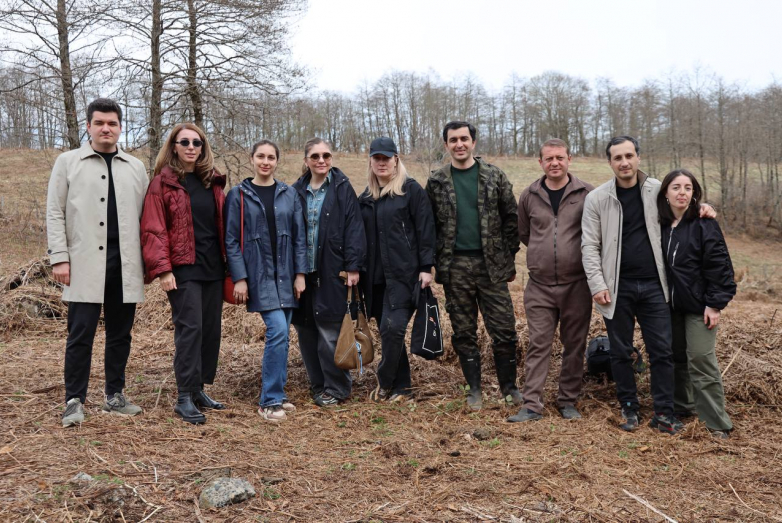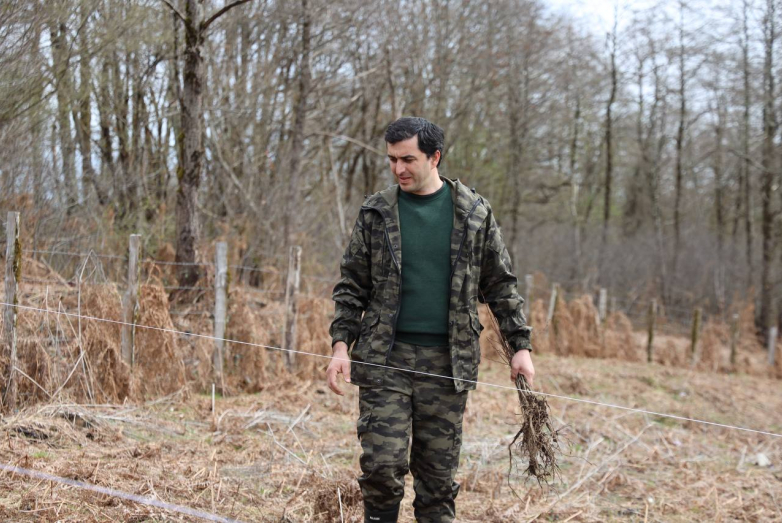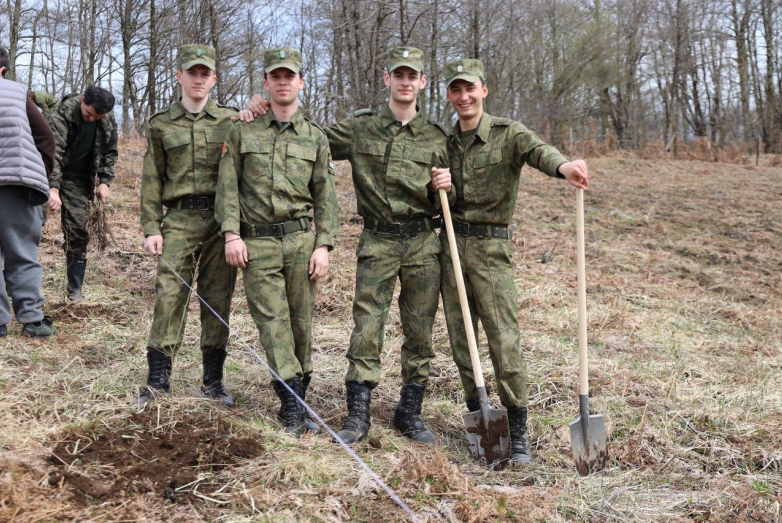"Ахьа" is a new project of the World Abaza Congress, within which more than 200 tree seedlings have been planted.
Chestnut is a valuable tree species, the population of which is decreasing all over the world due to harmful insects. Chestnut is also under threat of extinction in Abkhazia. The area of chestnut forests here extends from 500 to 1000 km above sea level. One of these areas was chosen for the implementation of the new WAC project.
The tree planting initiative proposed by the WAC department for work with local branches was warmly welcomed and supported by the Chairman of the WAC Supreme Council Mussa Ekzekov. Having secured the support of ecologists, agronomists, students of the agricultural engineering faculty of the ASU and young cadets, the Congress team implemented the environmental project.
Specialist of the department for work with local branches Kherson Simoniia told about the idea of creating the project and its progress.
"The idea came up last year. Recently, we have been increasingly hearing about palm trees, boxwoods, and chestnuts dying due to pests. Experts are trying to attract the public to the environmental problem. The WAC team decided not to stand aside from the problem and make its contribution," he said.
The planting was preceded by a labor-intensive process that took several months. The project curators consulted with representatives of the Abkhazian Research Institute of the Forest Station (ABNILOS), who helped in choosing a suitable site and gave professional advice. The location was agreed upon with the forestry of the Sukhum Region. During the preparation, it turned out that chestnut seedlings need to be alternated with other crops. Therefore, several plant species were planted next to the chestnuts by the one to three principle.
"To create a natural barrier from the parasitic fungus, which over the past 100 years has practically destroyed this valuable species throughout the world, the chestnut must be hidden among other species. Young seedlings require careful care, if during the first five years the plant was attacked by a pest and did not receive help, it will most likely die. However, after this time the tree becomes independent, it is less susceptible to external factors," explained the deputy head of the State Forestry Administration Kamo Melkumov.
The coordinator of the "Ахьа" project Kherson Simoniia thanked everyone who made the implementation possible.
"I would like to thank the leadership of the Ministry of Defense of the Republic of Abkhazia, the Abkhazian Research Institute of the Forest Station (ABNILOS) for their assistance in implementing the project. During the preparation, we learned a lot. I would like to express special gratitude to the conscripts and students of the ASU agricultural engineering faculty, who enthusiastically took part in the project," added Simoniia.
More than 30 students and cadets together with the WAC team planted over 200 plantings in the village of Verkhnyaya Eshera. The project participants received a boost of energy and positive emotions from joint work.
"We are participating in the project of the World Abaza Congress for the first time. Today, second- and third-year students came to the protected area. For them, such an event is a practice that motivates them to engage in their chosen profession and instills love for it. We express our gratitude to the WAC for allowing us to help in this good work," said Astan Ardzheniia, a teacher of the agricultural engineering faculty of the Agronomy Department of the ASU.
The goal of the "Ахьа" project is to restore the population of endangered crops, to cultivate a caring attitude towards nature, in particular, towards plants that occupy an important place in the Abkhazian national culture. The organizers plan to monitor the growth and condition of the young forest. Replanting of seedlings is planned for the fall.




to login or register.